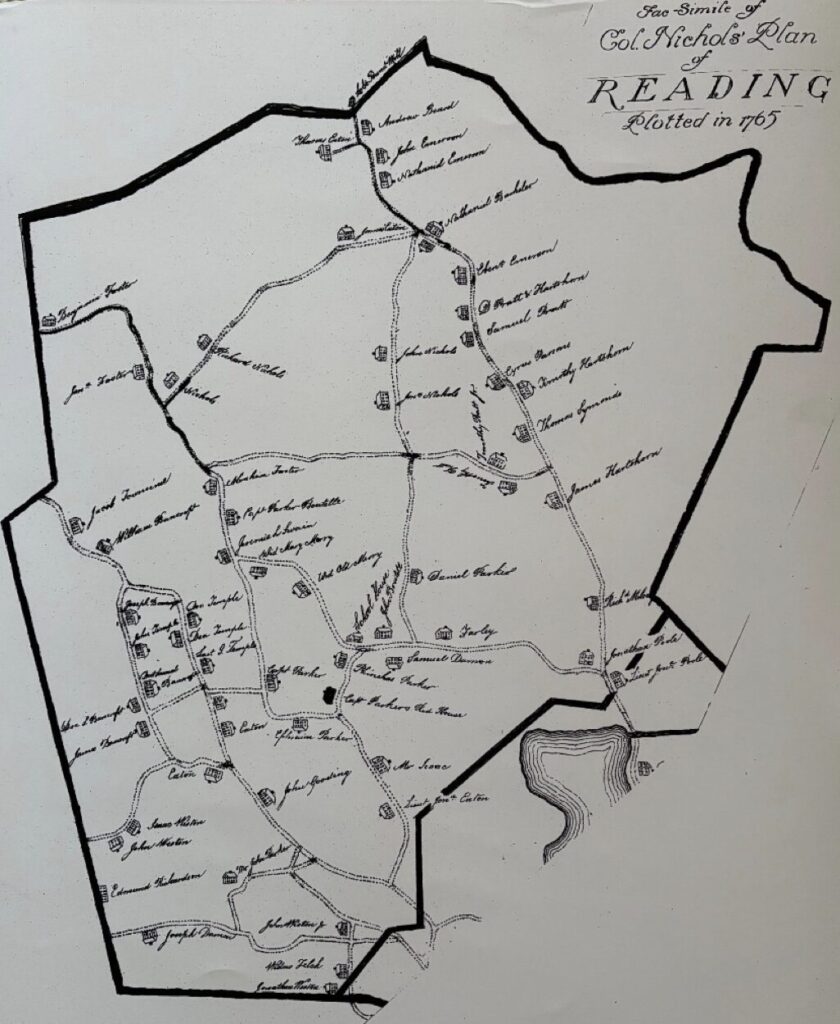A Series of Articles by the Reading Antiquarian Society
Reading, MA — A few logistics first. Reading or Reading? In 1775, Reading was comprised of the present towns of Wakefield, North Reading, and Reading. Even though at that time there were three separate parishes, we were still one town. So, one must be mindful of where and how the name Reading is referred to when looking for source information.
For instance, the Massachusetts Soldiers and Sailors of the War of the Revolution, which was published in 1891, seeks to list the names of all those who served. When “Reading” is attached to a record of service, that person could have resided in any of the three parishes. In 1934, Loea Parker Howard sorted through the 17 volumes of that record and compiled a list of those with a connection to “then” Reading. The result was over 500 men who participated in the Revolutionary War in some capacity. (Of course, some of those include people who have multiple service records.) In 1975, Bruce Morang, editor of the Reading Chronicle at the time, published A Town that Went to War. It is a treasure-trove of information about Reading’s involvement in the Revolutionary War and contains lists of 273 men that he was able to confirm participated on April 19, 1775 – just on that one very important day!

A local militia had been part of Reading since soon after its founding in 1644. Every able-bodied white male between the ages of 18 and 45 was required to train. But it was not until 1775 that the Provincial Congress and the Committee on Safety required that one-fourth of all militia companies in the Province be enlisted, equipped, and hold themselves in readiness “to march on the shortest notice” – thus creating the Minutemen. They kept loaves of bread baked and a supply of cheese to take with them. Their arms were at the ready, along with their powder and bullets. The lists of the Reading men who responded to the call included four different Companies – the First Parish Company (Wakefield), the Second Parish Company (North Reading), the Third Parish Company (today’s Reading), and the 4th Company of Minute. In general, the Company of Minute, were men chosen from each of the three parish companies who were considered exemplary in service and experience. According to Morang, a total of 84 men who resided in the Third Parish (62 from the Third Parish Company and 22 from the Minutemen) marched on April 19.
Those numbers don’t mean much unless we can relate it to how many people were in our Reading at the time. It is difficult to find population information for 1775. The closest we can come is to use the 1765 map, which shows 61 houses (and by 1795, there were only 76 houses). If 84 men headed to Concord, then it is fair to assume that almost every house sent a husband, son, or brother on that day, and several sent more than one. That would compare to sending approximately 10,000 Reading men today!
In Part 4, we will talk about that momentous day and some of the men who participated.
